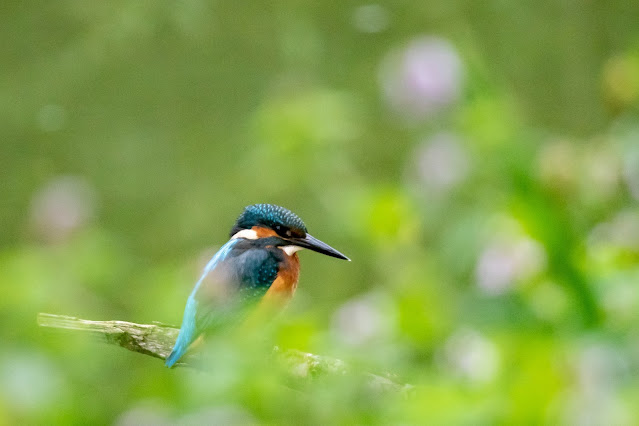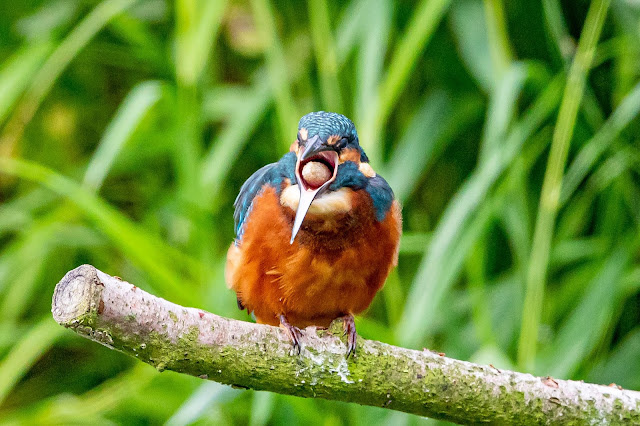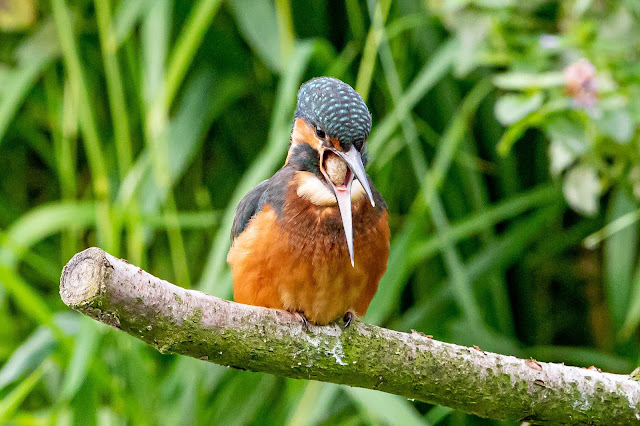Carrying on with my rather laissez faire attitude to going for lifers, I had another trip out today for a long staying bird, a black stork. This one even by my standards has been around for a long time before I've got round to going for it. It was on the 12th of August when it first appeared at Frampton Marsh, showing stupendously well to some lucky observers. Since then it has been commuting around the local area, disappearing for a few days and becoming less showy. I've tried for it twice, coming back from Bempton after Albert and also last week after the white-tailed lapwing. On both cases I dipped but it was a side-show on both occasions. This time I set out to nail it and made it my first and only stop.
By 7.40 I was pulling into the car park on what promised to be a very hot day. The forecast was for temperatures almost to 30C and light winds. I started off with a walk round the circuit of the reserve to see if it was showing. The reserve was quite quiet for the time of year. There was a good-sized flock of godwits on the marsh waiting it out till the tide dropped and they could go and feed in the Wash.
They were pretty sedentary as though the heat had already started to get to them.
Normally there are large flocks of knot but they were absent today, though some smaller waders were around including some quite smart spotted redshanks.
and a flock of 27 spoonbills. Frampton is always very good them!
Of the stork though there was no sign. By 9.45 I was back at the car for a coffee and some breakfast. I decided to play the waiting game and headed back out to the highest point in Lincolnshire, a small mound in the middle of the reserve. It gave a good 360 degree view of the reserve in case the stork flew. Initially there was about 8 of us so we could scan all points. A very distant merlin on the gate-post gave us some distraction
and a hobby hawking over the field gave us hope that the heat building would drive the stork into the air.

By now it was 11 and getting very hot. I had a short break for some water back in the car then headed back to the mound for another stint. I was now the only watcher left and it was getting a bit uncomfortable. I decide to leave it till 12 and then call it. I had a final check of my phone before packing up and an alert popped up "Black stork still at Frampton" but no further details. The RSPB visitor centre was only a few hundred yards away so I yomped there and asked one of the ladies if they knew anything. "Oh yes, it just flew across the car park. I've got a photograph". I had been looking in the wrong direction and had missed it. "It dropped down over towards the next set of fields though". It had to be done so I grabbed my gear and together with about 5 others we fast-marched along the exit road towards the north end of the reserve. The fields were either reeds (no chance of seeing anything) or wheat fields with a combine harvester (not attractive for a stork). By now, it was just the two of us and we were some way past the reserve. A small track led off the road and we tried down there. Didn't look hopeful as a man was in the field doing something to a herd of sheep. "Doesn't look too hopeful for a.....what the hell is that under the tree?" The black stork was in the shade of the only tree around. Unfortunately just as we saw it, it saw us and took off.


My camera settings were all wrong and it was straight into the sun but I managed to grab a few photos of it as it drifted back towards the reserve.
It is a first year bird and very handsome although these shots don't do it justice. We marched back to the visitor centre and found out it had landed in the grasslands opposite. At very long range and through heat-haze you could barely see it.
but for some people this was their only view! In case you are wondering, it is the black lump in the lower photo! The visitor centre did a good range of cold fizzy drinks which hit the spot with the few of us who had gone out exploring.
Although by now I was very hot it had been another good day. That takes me to 391 on my UK list. If I'm to get to 400 soon I need to probably not leave lifers for a month before going for them next time!
 and a lone swan came in to have a preen.
and a lone swan came in to have a preen. There were two targets I really wanted to try the camera out on. The first was the dragonflies, mainly migrant hawkers, which were patrolling the reeds. They gave the camera a real try-out on its focus tracking ability. I think it performed pretty well, locking onto the fast moving insects and holding them as they darted around.
There were two targets I really wanted to try the camera out on. The first was the dragonflies, mainly migrant hawkers, which were patrolling the reeds. They gave the camera a real try-out on its focus tracking ability. I think it performed pretty well, locking onto the fast moving insects and holding them as they darted around. They also stopped on the kingfisher posts giving me the opportunity to see how well you could crop in distant objects, again it past the test with flying colours.
They also stopped on the kingfisher posts giving me the opportunity to see how well you could crop in distant objects, again it past the test with flying colours.















































